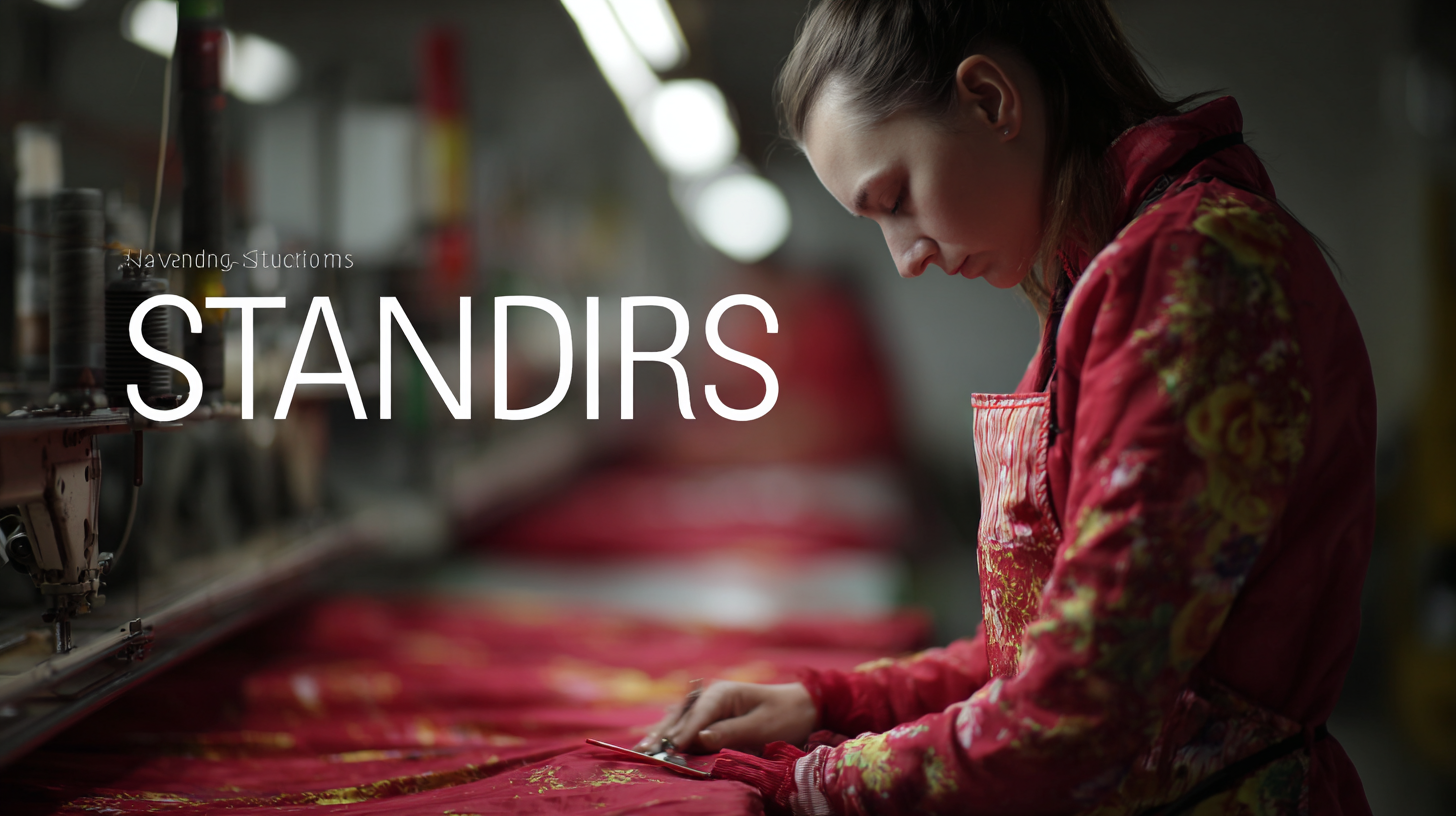
In today's competitive fashion landscape, the production of Women's Jackets is subject to an array of global standards that ensure quality, safety, and environmental compliance. According to a report by the Fashion Retail Academy, the women's outerwear market is projected to reach $30 billion by 2025, highlighting the growing demand for high-quality jackets. However, navigating the complexities of these standards can be challenging for manufacturers who must adhere to various regulations, including those set forth by the International Organization for Standardization (ISO) and the American Society for Testing and Materials (ASTM).

As businesses strive to meet consumer expectations for durability and sustainability, understanding and implementing these global standards becomes crucial. This guide aims to equip manufacturers with the knowledge needed to achieve compliance while fostering innovation and maintaining competitive advantage in the booming women's jackets market.
In the realm of women's jackets production, understanding global quality standards is crucial for manufacturers aiming to ensure compliance and enhance their market competitiveness. International organizations emphasize the need for regulatory reforms to improve the quality of non-standard jobs, which directly impacts the garment sector. Compliance with specific quality standards not only safeguards consumer trust but also fosters a more sustainable production environment.
Brands need to be aware that certifications such as CE and NF play a significant role in affirming their quality commitments. By adhering to these stringent standards, companies can facilitate their entry into international markets, much like successful players who have adapted to global regulations while maintaining high production quality. As industries evolve and face increasing global scrutiny, manufacturers that prioritize quality standards will be positioned to lead the market and inspire confidence among their customers.
| Quality Standard | Description | Compliance Requirements | Testing Methods |
|---|---|---|---|
| ISO 9001 | Quality Management Systems | Documented procedures and continual improvement | Internal audits, Management review |
| OEKO-TEX® Standard 100 | Textile and leather products | No harmful substances present | Laboratory testing for chemical residues |
| REACH | Registration, Evaluation, Authorisation of Chemicals | Registration of chemicals used in production | Chemical analysis and risk assessments |
| ASTM D5034 | Tensile Strength of Fabrics | Tensile strength must meet specified values | Tensile testing machine |
| GB 18401 | National Standard for Textile Product Quality | Criteria for harmful substances in textiles | Chemical testing and evaluation |
In the women's jackets production sector, adhering to key compliance regulations and certifications is paramount for ensuring product quality and safety. According to the Global Apparel Manufacturing Association, more than 70% of women's outdoor jackets produced globally must meet specific environmental and safety standards, including Oeko-Tex Standard 100 and REACH compliance. These certifications not only help mitigate risks associated with harmful substances but also enhance marketability, as consumers increasingly demand transparency regarding product safety and sustainability.
Additionally, certifications like ISO 9001 for quality management systems are vital for manufacturers aiming to maintain international competitiveness. A report by the International Organization for Standardization indicates that organizations holding ISO 9001 certification can increase efficiency by up to 30%, significantly impacting their production processes and product reliability. Moreover, adherence to these standards opens doors to new markets, enabling producers to showcase their commitment to quality and ethical practices, which are becoming crucial factors in consumer purchasing decisions.
When it comes to producing women's jackets, quality compliance starts with the careful evaluation of fabrics and materials used. Understanding industry standards is crucial for manufacturers aiming to meet consumer expectations while ensuring durability and comfort. Fabrics like cotton, polyester, and nylon each have specific properties that dictate their suitability for various jacket styles. For instance, cotton offers breathability and softness, making it ideal for casual wear, whereas synthetic fabrics provide enhanced durability and weather resistance for outdoor apparel.
Tip: Always request certifications from fabric suppliers to verify that their materials meet relevant standards, such as OEKO-TEX or GOTS. This not only reassures quality but also showcases your brand's commitment to sustainability and ethical sourcing.
In addition to sourcing high-quality materials, it's essential to inspect fabric construction techniques. The weave or knit pattern can significantly impact the jacket's overall performance. A denser weave may provide better wind resistance, while a lighter knit could enhance flexibility and comfort.
Tip: Conduct regular quality checks during the production process, paying close attention to the seams and stitching since these details can affect the garment's longevity and aesthetic appeal. By implementing these practices, manufacturers can ensure their women's jackets not only comply with industry standards but also elevate their overall market appeal.
Sustainability in women's jacket manufacturing is increasingly taking center stage, with consumers demanding greater environmental accountability from brands. According to a report by the Global Fashion Agenda, the fashion industry is responsible for more than 10% of global carbon emissions, highlighting the urgent need for sustainable practices. Manufacturers are now adopting eco-friendly materials, including organic cotton and recycled polyester, which can reduce resource consumption and waste.

Integrating sustainability into production processes is not just beneficial for the environment, but it also impacts brand reputation and consumer loyalty. A survey by McKinsey & Company reveals that 67% of consumers consider sustainable practices when making a purchase, reaffirming the importance of aligning production with eco-conscious values. Furthermore, many companies are now investing in technologies to improve energy efficiency and reduce water usage, with reports indicating that implementing sustainable practices can lead to a 10-30% reduction in operational costs in the long run. As the demand for sustainable women's jackets continues to grow, manufacturers who prioritize these practices will not only comply with global standards but also build a competitive advantage in the market.
In the competitive realm of women’s jackets production, adherence to global quality compliance standards is crucial. A recent report by Allied Market Research indicates that the global women’s outerwear market is projected to reach $85 billion by 2025, highlighting the growing emphasis on quality and compliance in manufacturing processes. Companies must prioritize quality control measures throughout their production lines to meet evolving consumer demands and regulatory requirements.

Manufacturers can enhance their compliance and quality metrics by integrating real-time monitoring systems and standardized procedures. According to a study by McKinsey & Company, firms that implement robust quality management practices see a 20-30% reduction in production defects and a significant increase in customer satisfaction scores. Emphasizing sustainable practices in sourcing materials and adhering to environmental regulations also plays a pivotal role, as 70% of consumers are willing to pay more for eco-friendly products. By strategically refining manufacturing processes, companies can not only achieve compliance but also differentiate themselves in a crowded marketplace.
